Abstract
Recent interest among behavior analysts in protocol analysis techniques prompts a consideration of some general measurement issues and some special issues relevant to protocol analysis. The development of behavior- analytic method and theory specific to verbal report research is a good thing, and Ericsson and Simon's (1984) book, Protocol Analysis, provides a useful model of integrating psychological theory and the craft of research. But protocol analysis techniques do not provide a magic window to the “world within the skin,” and individual researchers should adopt these techniques only after confronting thorny issues such as how to determine the operating characteristics of verbal reports about private events, how to identify public performances to which protocol analysis can be applied productively, and how to maintain theoretical integrity in the empirical search for private events. We also caution against letting enthusiasm (and controversy) regarding protocol analysis distract behavior analysts from the benefits of using verbal report methods to study interesting events that are public in principle but difficult to measure in practice.
Full text
PDF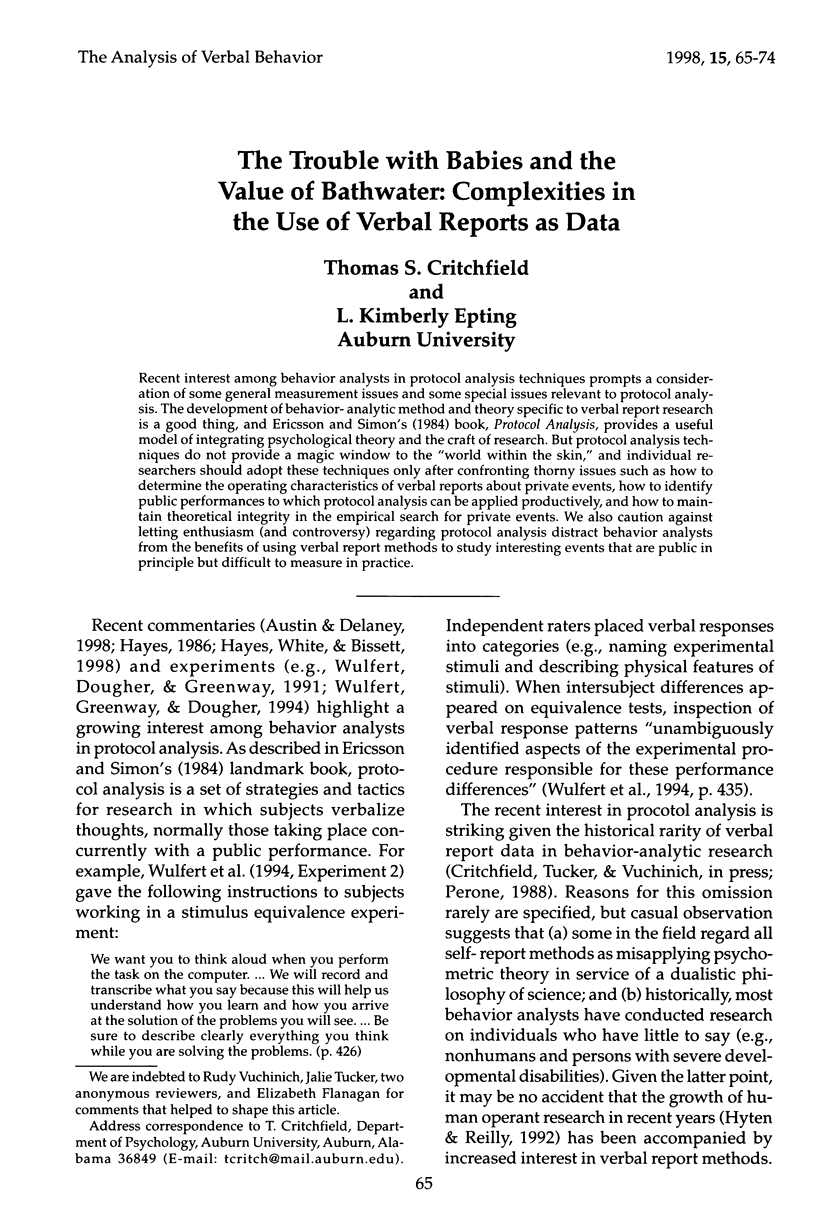
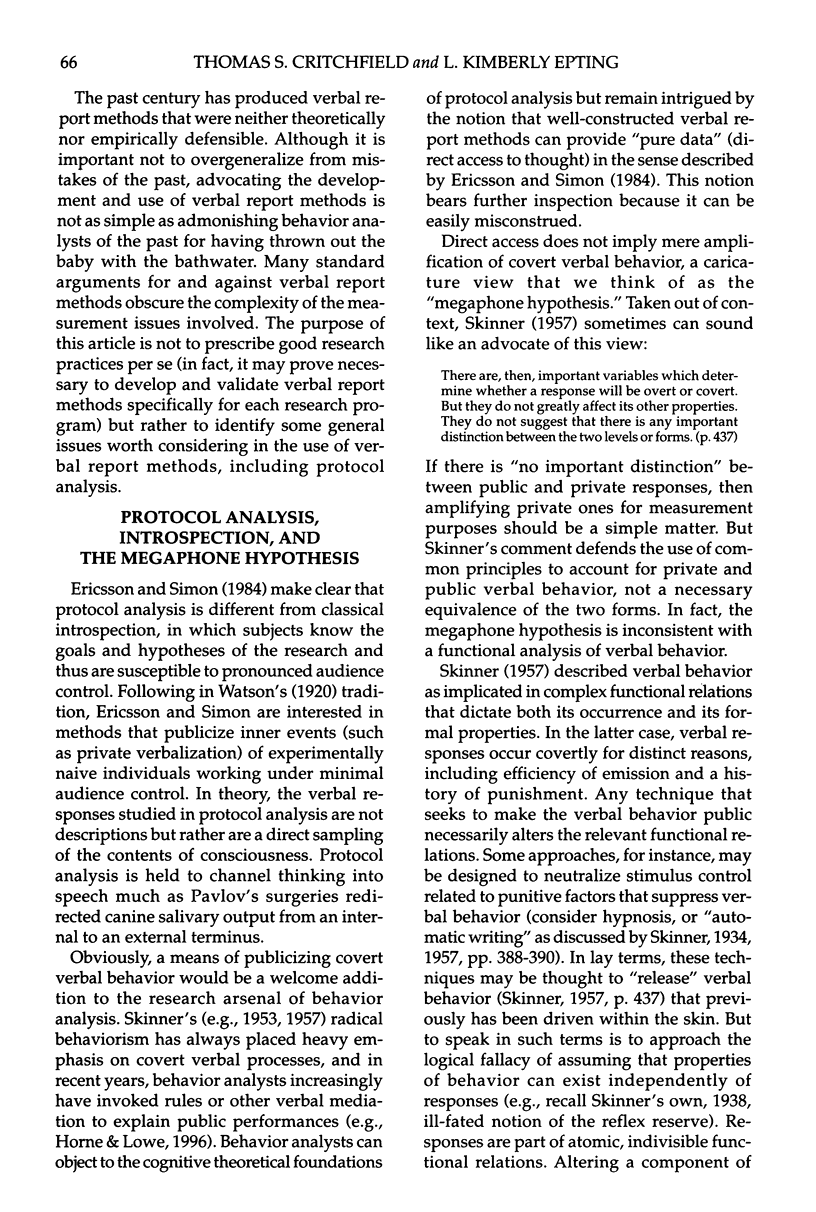
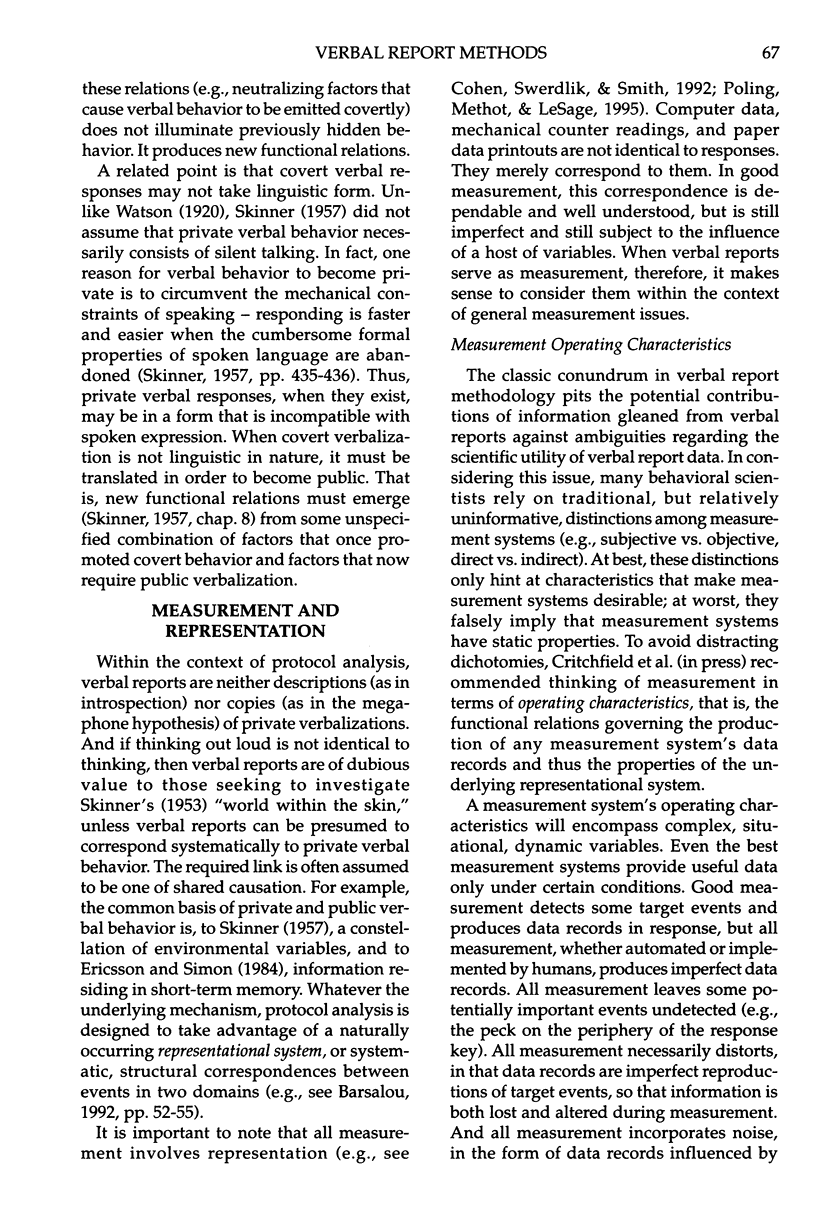
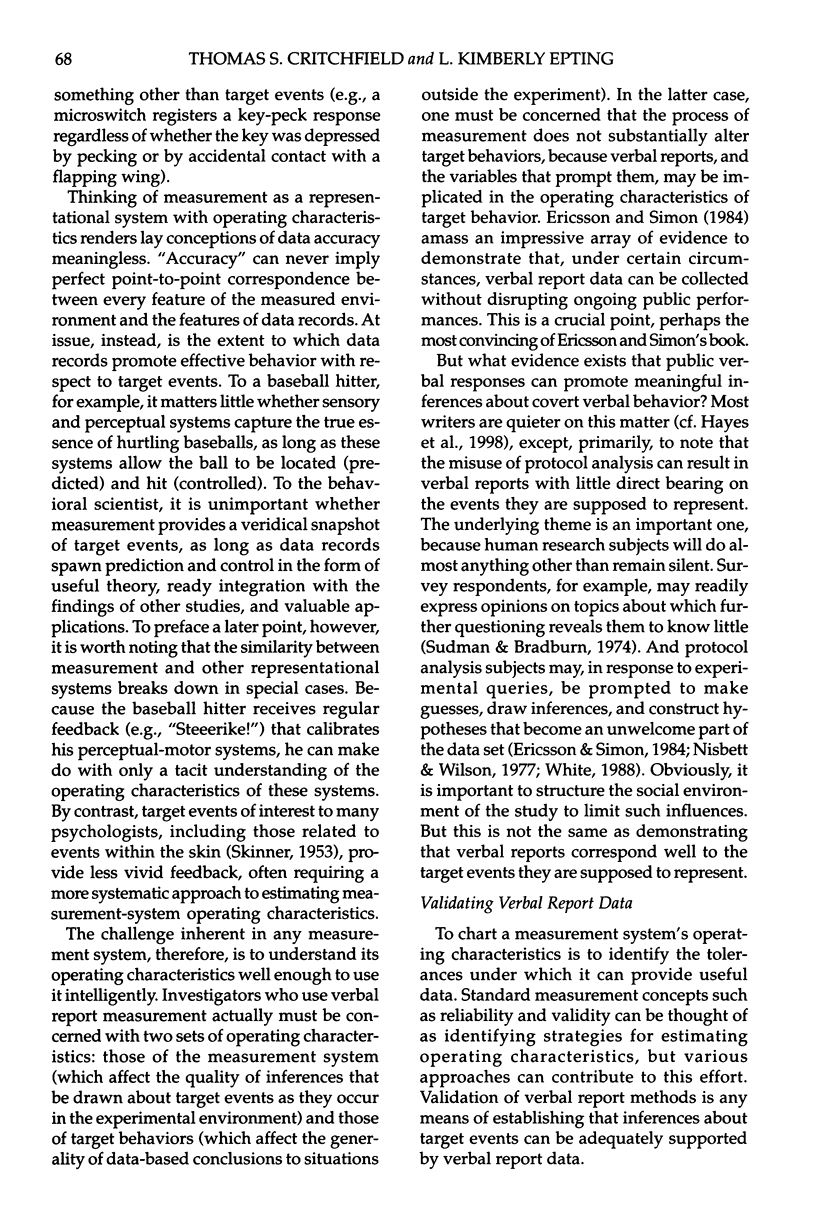
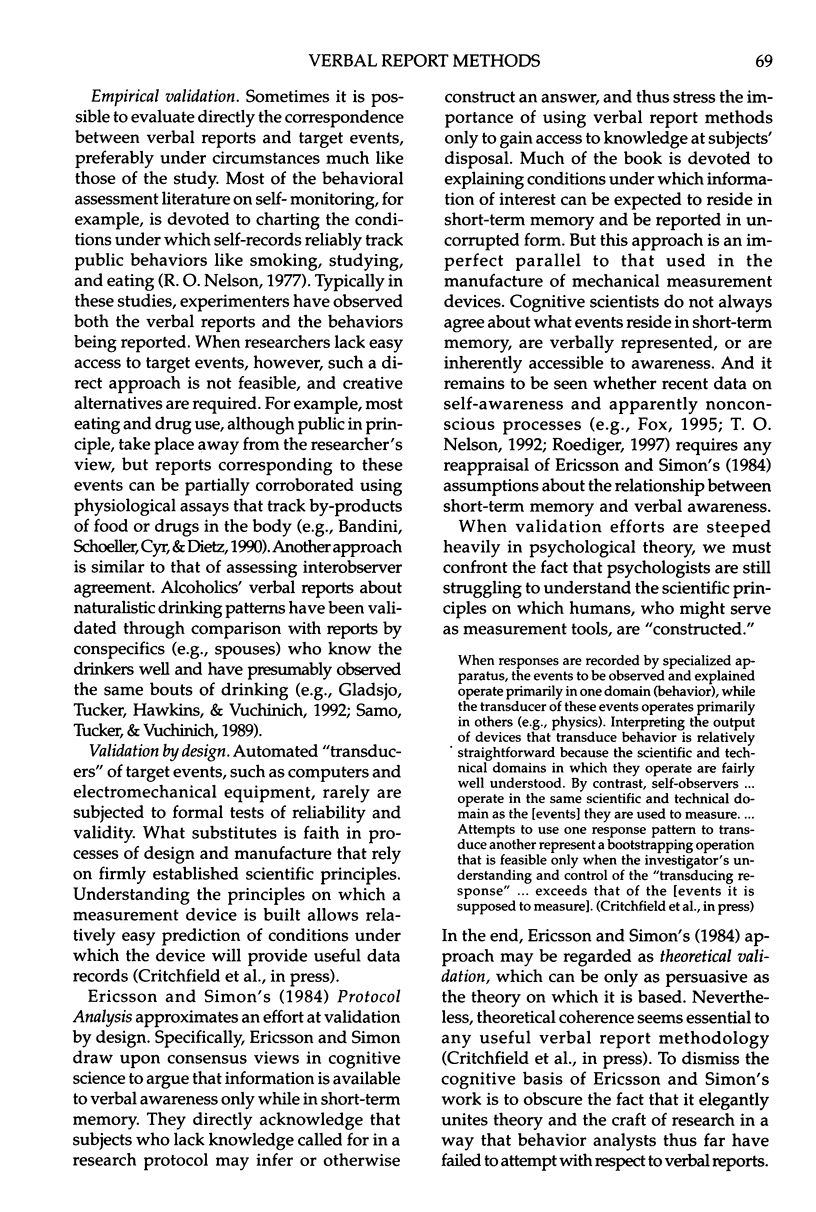
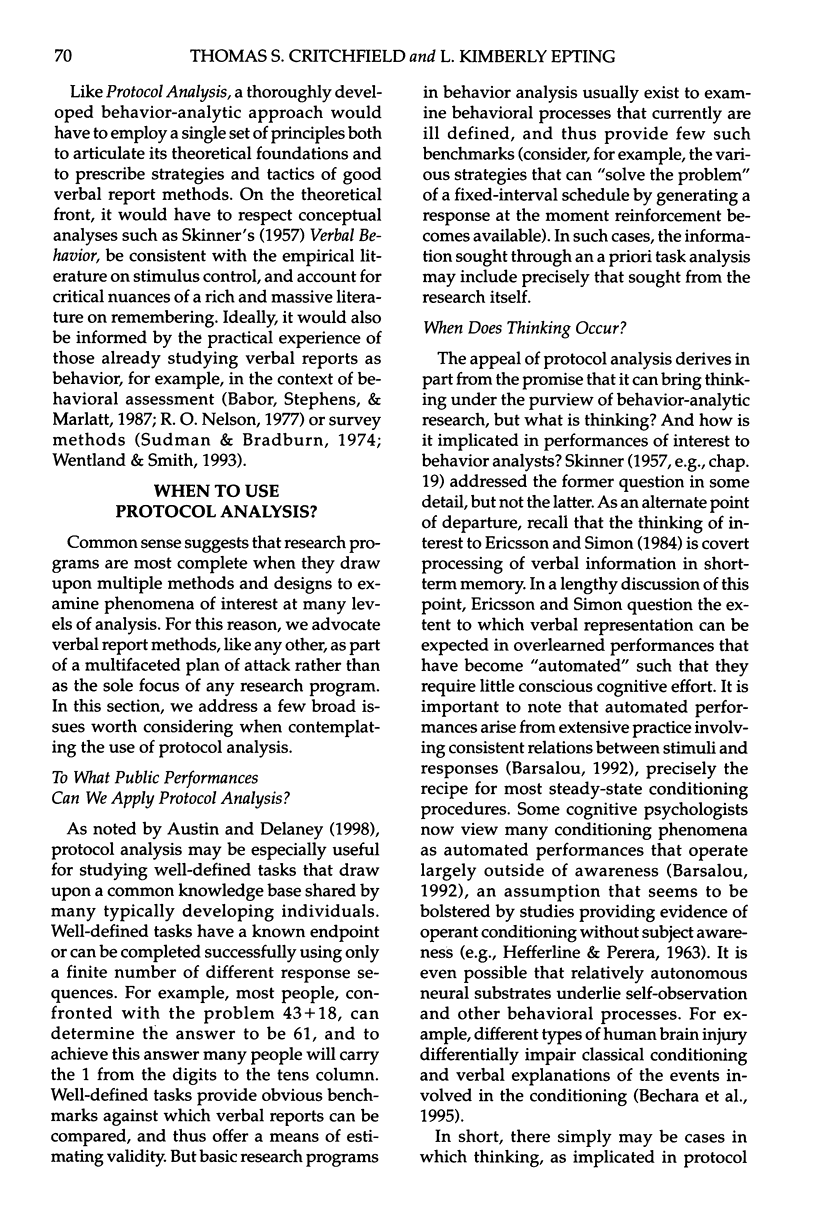
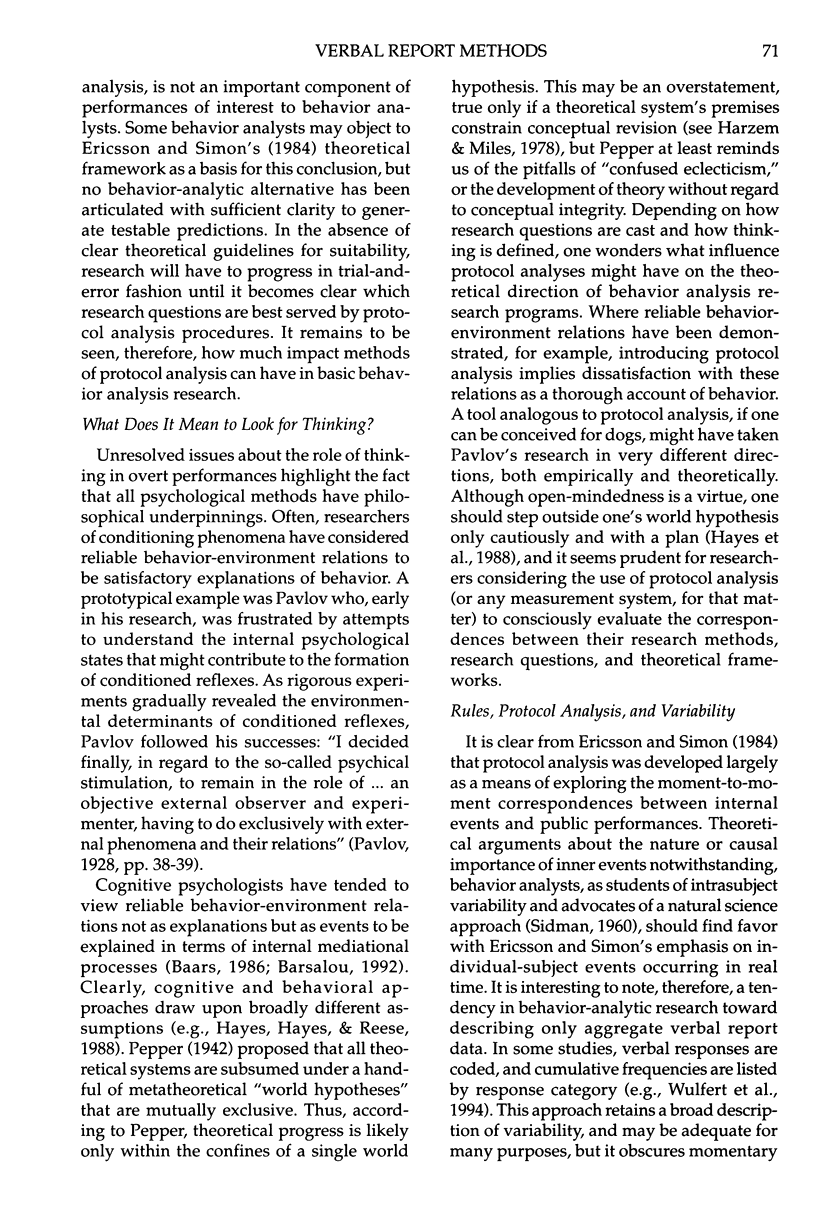
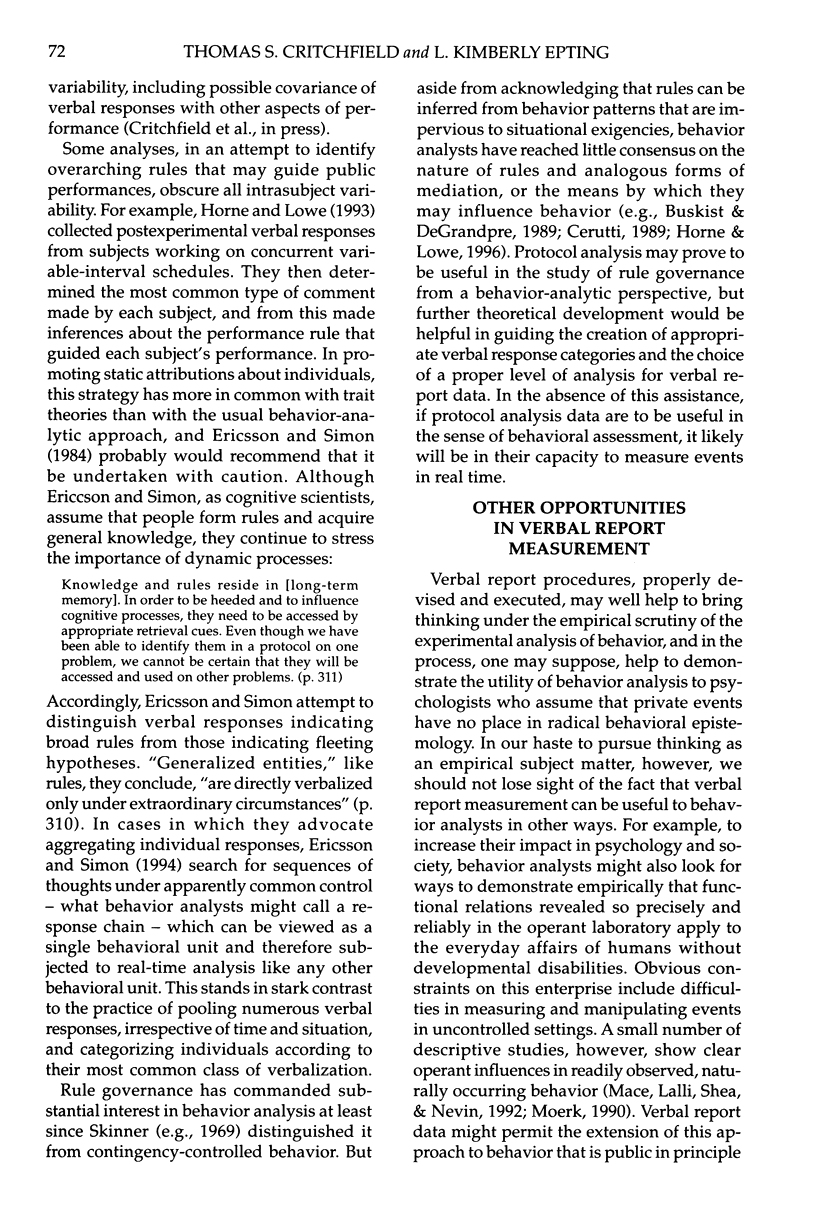
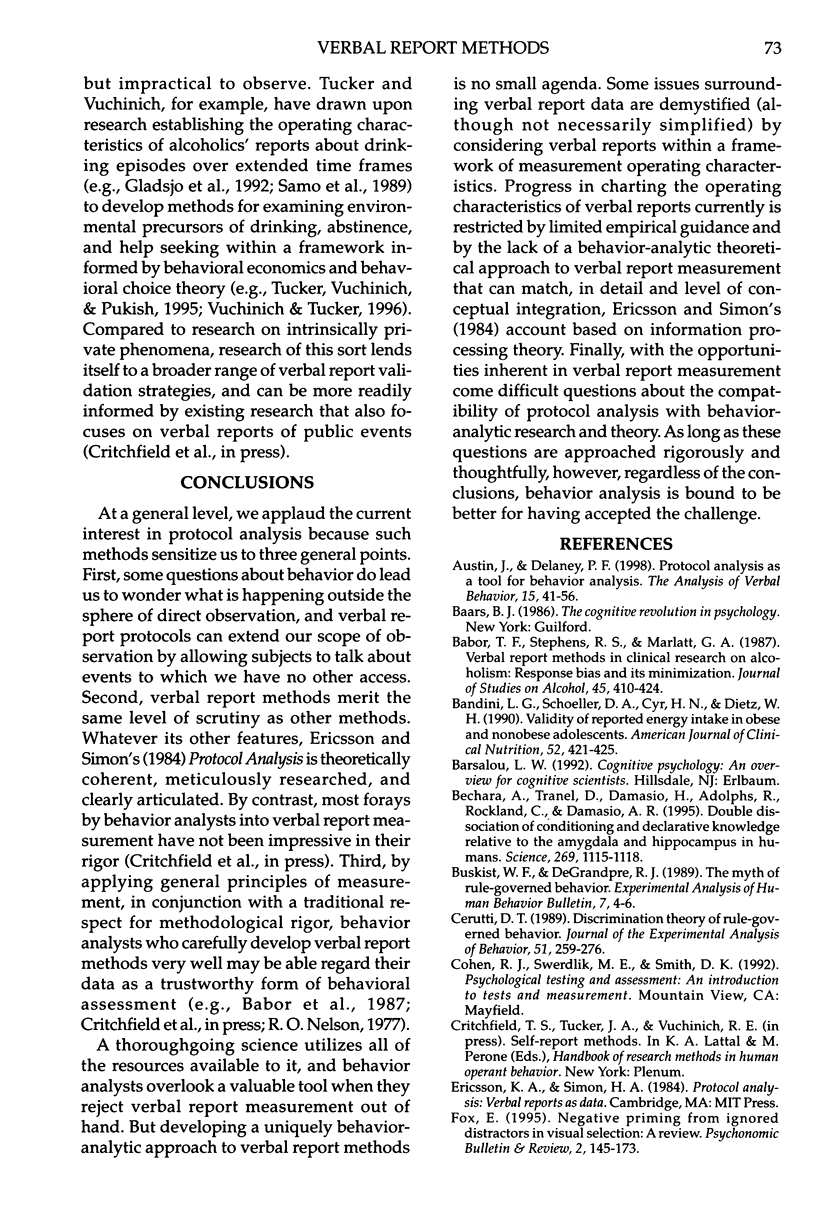
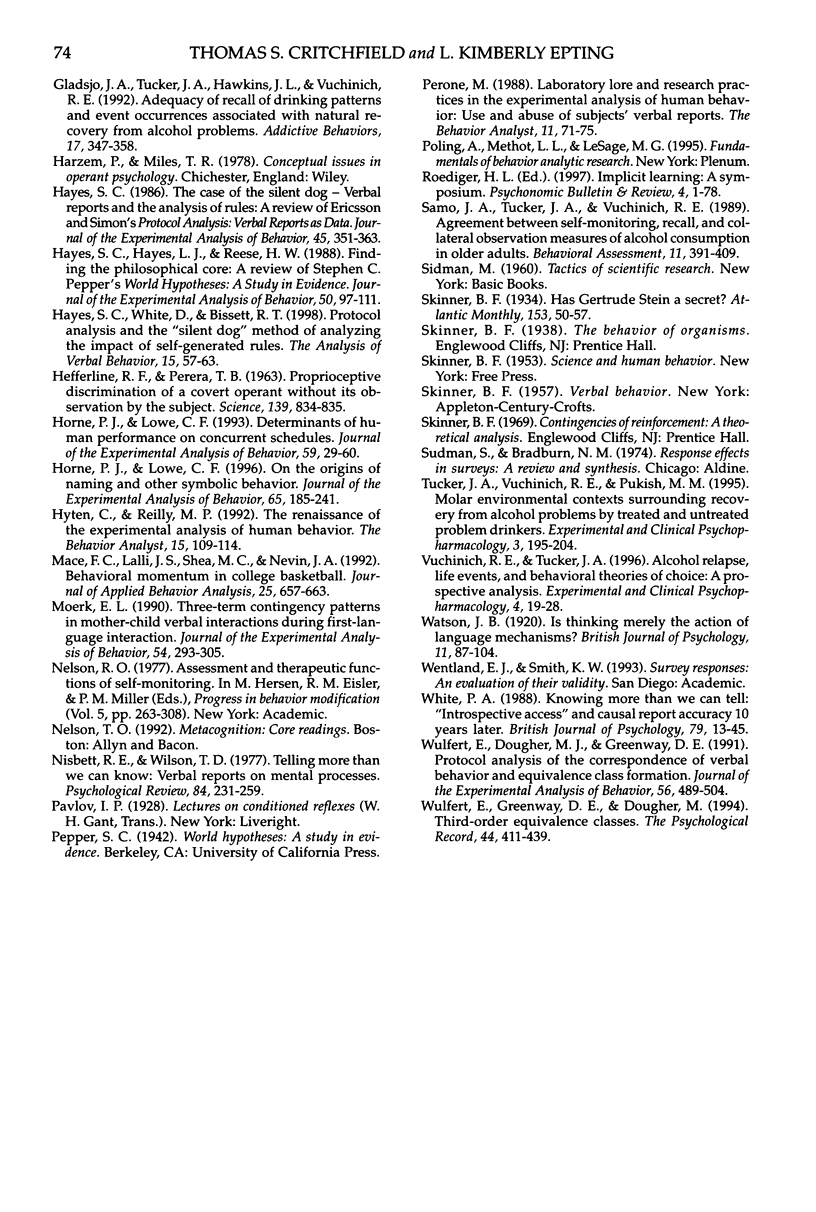
Selected References
These references are in PubMed. This may not be the complete list of references from this article.
- Babor T. F., Stephens R. S., Marlatt G. A. Verbal report methods in clinical research on alcoholism: response bias and its minimization. J Stud Alcohol. 1987 Sep;48(5):410–424. doi: 10.15288/jsa.1987.48.410. [DOI] [PubMed] [Google Scholar]
- Bandini L. G., Schoeller D. A., Cyr H. N., Dietz W. H. Validity of reported energy intake in obese and nonobese adolescents. Am J Clin Nutr. 1990 Sep;52(3):421–425. doi: 10.1093/ajcn/52.3.421. [DOI] [PubMed] [Google Scholar]
- Bechara A., Tranel D., Damasio H., Adolphs R., Rockland C., Damasio A. R. Double dissociation of conditioning and declarative knowledge relative to the amygdala and hippocampus in humans. Science. 1995 Aug 25;269(5227):1115–1118. doi: 10.1126/science.7652558. [DOI] [PubMed] [Google Scholar]
- Cerutti D. T. Discrimination theory of rule-governed behavior. J Exp Anal Behav. 1989 Mar;51(2):259–276. doi: 10.1901/jeab.1989.51-259. [DOI] [PMC free article] [PubMed] [Google Scholar]
- Gladsjo J. A., Tucker J. A., Hawkins J. L., Vuchinich R. E. Adequacy of recall of drinking patterns and event occurrences associated with natural recovery from alcohol problems. Addict Behav. 1992;17(4):347–358. doi: 10.1016/0306-4603(92)90040-3. [DOI] [PubMed] [Google Scholar]
- HEFFERLINE R. F., PERERA T. B. Proprioceptive discrimination of a covert operant without its observation by the subject. Science. 1963 Mar 1;139(3557):834–835. doi: 10.1126/science.139.3557.834. [DOI] [PubMed] [Google Scholar]
- Hayes S. C., Hayes L. J., Reese H. W. Finding the philosophical core: A review of Stephen C. Pepper's World Hypotheses: A Study in Evidence. J Exp Anal Behav. 1988 Jul;50(1):97–111. doi: 10.1901/jeab.1988.50-97. [DOI] [PMC free article] [PubMed] [Google Scholar]
- Horne P. J., Lowe C. F. Determinants of human performance on concurrent schedules. J Exp Anal Behav. 1993 Jan;59(1):29–60. doi: 10.1901/jeab.1993.59-29. [DOI] [PMC free article] [PubMed] [Google Scholar]
- Horne P. J., Lowe C. F. On the origins of naming and other symbolic behavior. J Exp Anal Behav. 1996 Jan;65(1):185–241. doi: 10.1901/jeab.1996.65-185. [DOI] [PMC free article] [PubMed] [Google Scholar]
- Hyten C., Reilly M. P. The renaissance of the experimental analysis of human behavior. Behav Anal. 1992 Fall;15(2):109–114. doi: 10.1007/BF03392593. [DOI] [PMC free article] [PubMed] [Google Scholar]
- Mace F. C., Lalli J. S. Behavioral momentum in college basketball. J Appl Behav Anal. 1992 Fall;25(3):657–663. doi: 10.1901/jaba.1992.25-657. [DOI] [PMC free article] [PubMed] [Google Scholar]
- Moerk E. L. Three-term contingency patterns in mother-child verbal interactions during first-language acquisition. J Exp Anal Behav. 1990 Nov;54(3):293–305. doi: 10.1901/jeab.1990.54-293. [DOI] [PMC free article] [PubMed] [Google Scholar]
- doi: 10.1901/jeab.1986.45-351. [DOI] [PMC free article] [Google Scholar]
- Perone M. Laboratory lore and research practices in the experimental analysis of human behavior: Use and abuse of subjects' verbal reports. Behav Anal. 1988 Spring;11(1):71–75. doi: 10.1007/BF03392458. [DOI] [PMC free article] [PubMed] [Google Scholar]
- Wulfert E., Dougher M. J., Greenway D. E. Protocol analysis of the correspondence of verbal behavior and equivalence class formation. J Exp Anal Behav. 1991 Nov;56(3):489–504. doi: 10.1901/jeab.1991.56-489. [DOI] [PMC free article] [PubMed] [Google Scholar]


